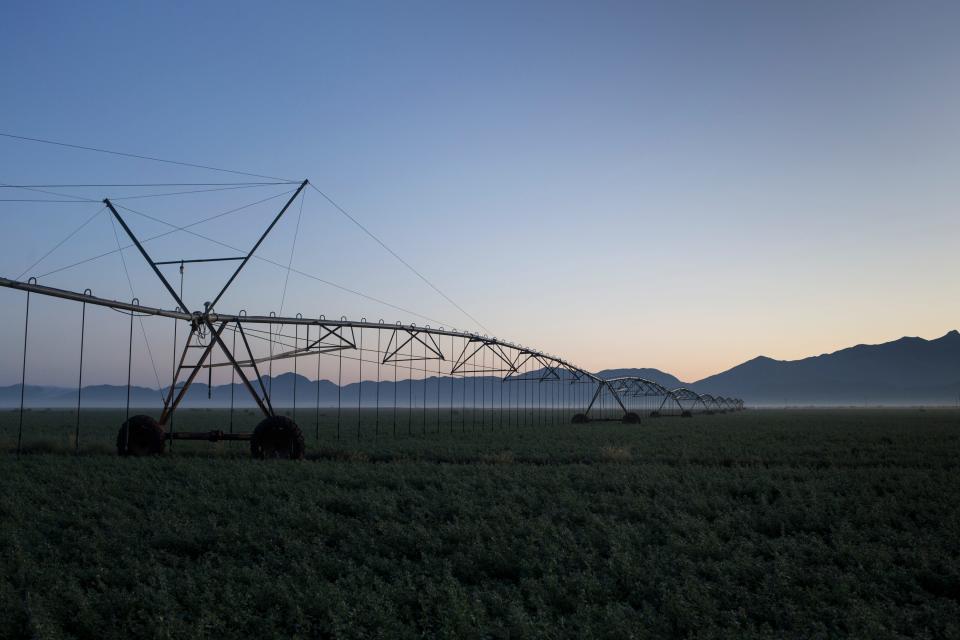I helped pass Arizona's groundwater law. 40 years later, it's time for the next step
Forty-five years ago, as governor, I gathered Arizona’s leaders to confront a growing water crisis: declining groundwater that threatened our economy and imperiled Arizona’s growth.
We worked together as Republicans, Democrats, and representatives from agriculture, homebuilders and industry to secure our future. In the end, we negotiated, and the Legislature then enacted, the 1980 Groundwater Management Act (GMA).
That legislation has served us well over the past four decades.
It provided the basis for sustained growth.
It set the stage for completion of the Central Arizona Project.
It proved that Arizona was prepared to manage its water supply for generations to come.
We never expected this water future

Back then, the rural counties of the state, including my hometown of Flagstaff in Coconino County, were largely left out of the GMA’s regulatory framework. Those areas were not facing a crisis … yet.
None of us imagined that Arizona’s population would soar from less than 3 million to more than 7 million, or that the worst drought in a thousand years was coming, or that out-of-state, industrial agriculture would pile into the state, demanding irrigation water for tens of thousands more acres.
That unforeseen future has now arrived.
In southern Arizona, the Willcox groundwater basin water levels are dropping so rapidly that one hydrologist recently commented “in 20 years, there might not be anybody left there.” Some residents are now having water hauled while others moved because of the declining water table.
In the Hualapai groundwater basin in Mohave County, the Department of Water Resources found that current groundwater withdrawals are so high, there is not a reasonable, safe supply of groundwater for agriculture. It also found that groundwater is overused by more than 11 billion gallons every year — a deficit equal to the amount of water used by 115,000 households in Phoenix for an entire year.
In La Paz County, residential wells have been going dry since 2015, and even deeper municipal wells are declining.
While some parts of the state have rules to protect their imperiled groundwater, most of the state does not. This includes cities and towns from Flagstaff to Camp Verde to Patagonia, and many others without any protection for their groundwater supplies.
Rural areas need local groundwater control
Earlier this year, Gov. Katie Hobbs took the first step toward reform. She appointed a broad-based, bipartisan Water Policy Council and charged it to recommend legislative solutions by the end of the year.
On Nov. 29, the council proposed a package of reforms for the Legislature to consider. The proposals take advantage of what we have learned from the urban Groundwater Management Act over the last four decades.
However, there are major differences between then and now, and between urban regulation and rural management.
Groundwater is in trouble: How much is left?
In contrast to the more centralized structure of the urban GMA, a new Rural Groundwater Management Act would be built on decentralized governance that can be initiated by local voters or their representatives.
And it would establish groundwater councils consisting of no fewer than five and no more than nine local members appointed from lists submitted by local government entities and stakeholder groups.
These councils, in turn, would develop area goals and management plans to protect local groundwater supplies.
Lawmakers must pass these reforms
Management plans would provide for inventorying and reporting water uses, developing conservation measures and incentives, and making recommendations to the Department of Water Resources.
Management plans would then be subject to concurrence by the Department of Water Resources, thereby providing a balance between informed local control and reasonable state oversight and technical expertise.
This package of reform proposals will be submitted to the Legislature in January.
By acting on these recommendations, the Legislature will assure a bright future for rural Arizona.
By demonstrating Arizona’s unity and commitment to managing groundwater, it will strengthen the state’s credibility in the upcoming and difficult negotiations with California and the Colorado River basin states.
The time to act is now.
Bruce Babbitt served as Arizona governor from 1978-87 and as secretary of the Interior from 1993-2001. Reach him at brucebabbitt2000@yahoo.com.
This article originally appeared on Arizona Republic: Arizona must reform the groundwater law I helped pass

